Museum Island of Berlin
Museum Island in Berlin is an important cultural landmark right in the heart of the city. It is acknowledged as a UNESCO Heritage site and it is home to five excellent museums that are famous around the world. These museums are the Pergamon Museum, the Neues Museum, the Altes Museum, the Bode Museum, and the Alte Nationalgalerie. Each offers unique exhibits and collections that attract visitors from all over.
Museum Island is a wonderful destination for anyone who enjoys history, culture, and beautiful buildings. Each museum on the island displays a wide range of art and historical objects from different time periods. Beyond the collections, the museums themselves are impressive examples of architecture, showcasing the creativity and skill of their builders.
Table of Contents
Where is the Museum Island location?
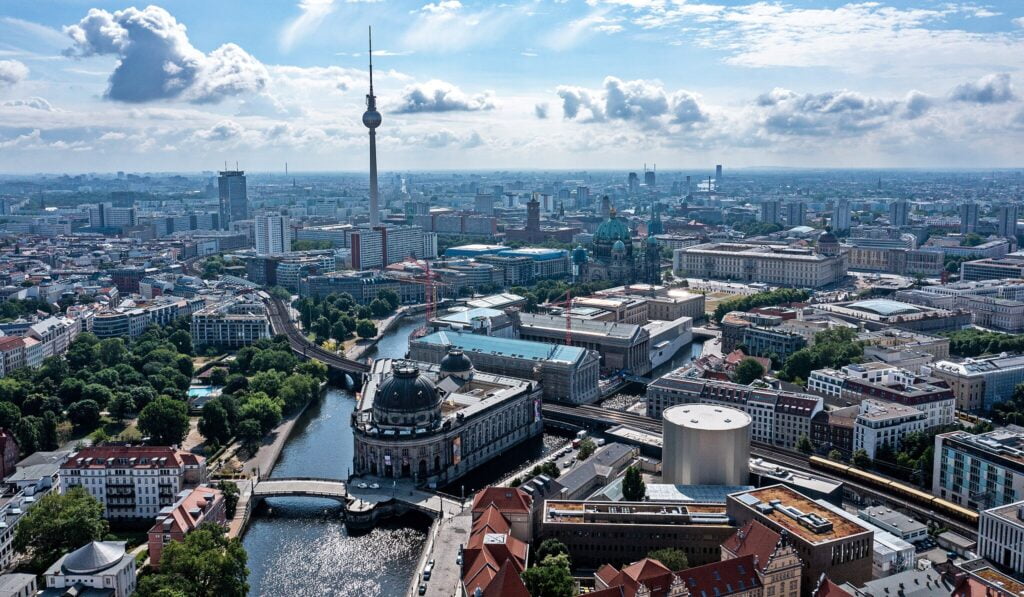
Museum Island is located between the Spree River and the Kupfergraben Canal, making it an actual island. It can be found in the heart of the Mitte district of Berlin, near popular attractions like the Berlin Cathedral(Berliner Dom) and the Lustgarten Park.
Inscription of Museum Island
Museum Island, or Museumsinsel, became a UNESCO World Heritage Site in 1999 because of its incredible collection of museums. This unique site not only highlights the evolution of museum design over time but also plays a significant role in preserving cultural and intellectual history. UNESCO recognized Museum Island as an important place for human history and art as well as a great example of urban architecture.
What is the history of Museum Island?
The contemporary museum is an important cultural idea that began during the Age of Enlightenment, a time when people started to think differently about knowledge and society. This idea became more accessible to everyone during the French Revolution. A great example of this is Museum Island(Museumsinsel), a famous area in the center of a city that showcases this concept with its impressive buildings and meaningful location. The idea of the museum as a place for culture and learning really started back in the 18th century during the Enlightenment, when people valued knowledge and shared experiences more than ever before.
Between 1824 and 1930, five museums were built as part of a big project. These museums highlight how museum design has changed over the years. Each one was carefully planned to create a connection with the art it holds. The buildings themselves are designed in a way that enhances the importance of the art collections, showing how societies have developed over time.
What is the Architecture of Museum Island?
The Berlin Museum features a unique collection of buildings that highlight how museum architecture has evolved over the last century. Built between 1824 and 1930 by well-known Prussian architects, the five museums represent a grand vision and show how ideas about designing museums have evolved during that critical time.
This unique collection is designed primarily for museum purposes and stands out beautifully in the city, much like a crown on a head. The Museumsinsel (Museum Island) in Berlin is a great example of how buildings can create a public space in a city. It holds significant meaning, similar to the importance of the Acropolis in Greece.
What is the Art and Archaeology of Museum Island?
The Museumsinsel, or Museum Island, is important in history because it helped shape a unique type of place for showcasing art and history. It played a key role in the development of modern museums that focus on art and archaeology. The Berlin Museum is truly one of the most impressive and important cultural sites in the world. The Museumsinsel, or Museum Island, is not only notable for its buildings and design but also for the incredible collections found in its five museums. These collections showcase the history and progress of human civilization, making the site both an architectural gem and a treasure of cultural heritage.
What is the history of the Pergamon Museum?
The Pergamon Museum was created by architect Alfred Messel, and its building process took twenty years, from 1910 to 1930, under the management of Ludwig Hoffmann. Alfred Messel originally planned for the building to include a fourth section, but that addition was never constructed.
What is the Pergamon Museum famous for?
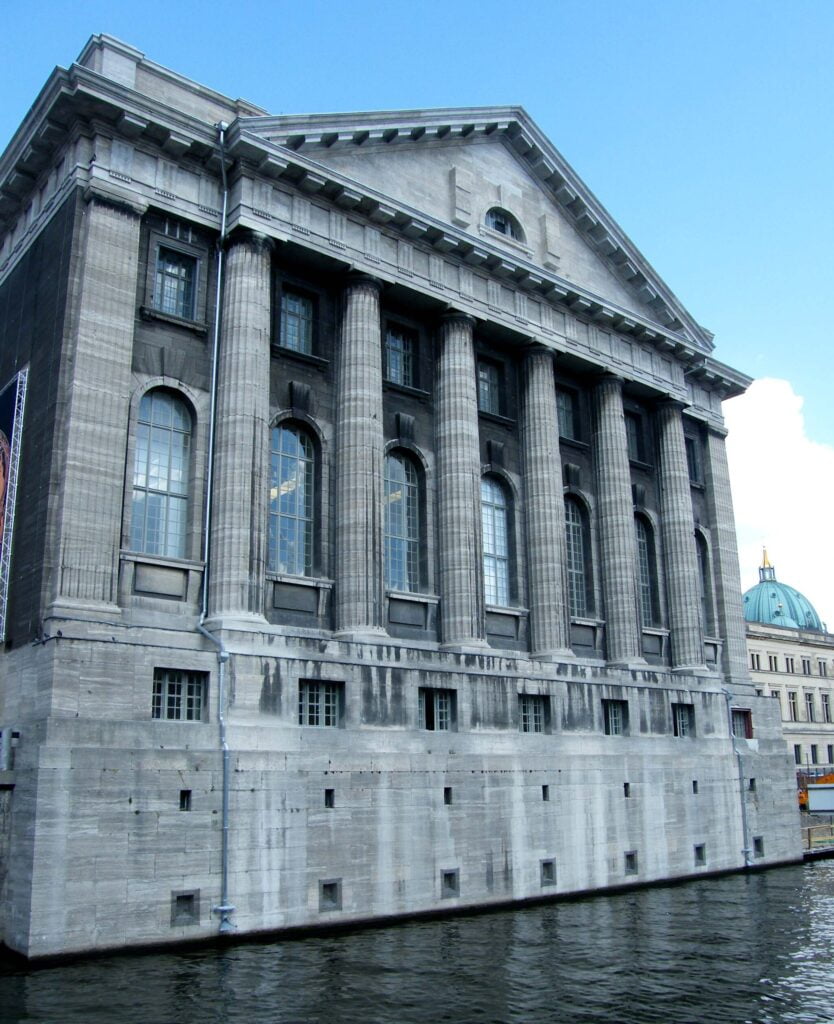
The Pergamon Museum, located on Museum Island in Berlin, is famous for its impressive collection of large-scale buildings and historical items. It offers visitors a chance to see extraordinary art and architecture from different cultures and time periods. Some of the most well-known attractions at the Pergamon Museum include the Pergamon Altar, a large and impressive structure from the ancient Greek city of Pergamon; the Ishtar Gate, a beautiful entrance that once welcomed visitors to the city of Babylon; and the Market Gate of Miletus, which served as a grand entrance to the bustling market area of the ancient city of Miletus.
What is the history of the Neues Museum?
The Neues Museum’s reopening is an important part of 19th-century art and architecture history. This museum, designed by Friedrich August Stüler, was built between 1843 and 1855. Unfortunately, it was damaged during World War II and remained a neglected site for many years. It wasn’t until the 1980s that any efforts were made to secure the building. Starting in 2003, British architect David Chipperfield led a careful restoration project to revive the museum, allowing it to become a vibrant part of the cultural landscape once more.
What is the Neues Museum famous for?
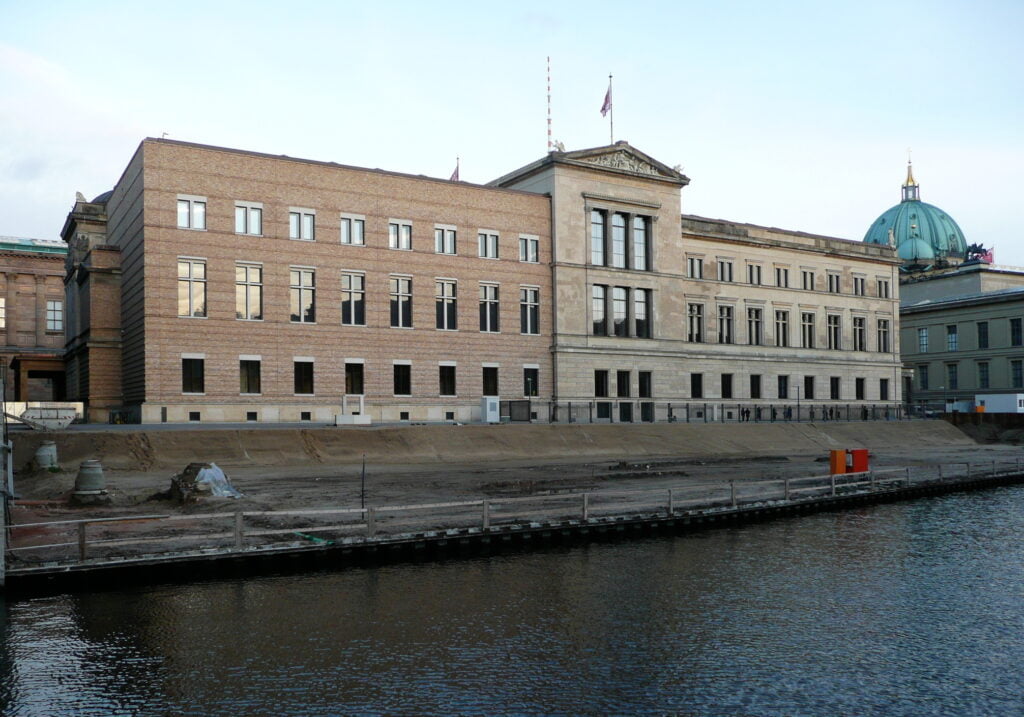
The Neues Museum is well-known for its stunning architecture, which beautifully blends the original building from the 1800s with modern updates. Some of its most popular exhibits include the Egyptian Collection, featuring the famous Bust of Nefertiti and ancient papyrus scrolls from Egypt. There’s also the Prehistoric and Early History Collection, showcasing interesting artifacts from early European and Middle Eastern cultures.
Additionally, visitors can see the remarkable Berlin Gold Hat and treasures from the Trojan era. The Neues Museum is a special place on Museum Island that showcases a mix of ancient artifacts and historical significance. Its modern renovations make it a cultural gem worth visiting.
What is the history of the Altes Museum?
The Altes Museum, built in 1830 by famous architect Karl Friedrich Schinkel, is one of Germany’s most important examples of Neoclassical architecture. It was originally intended to showcase art collections for the Prussian royal family. This museum holds a special place in history as Berlin’s first public museum, marking a new way of displaying art and cultural treasures. With its fascinating background, the Altes Museum is a great destination for anyone interested in history.
What is the Altes Museum famous for?
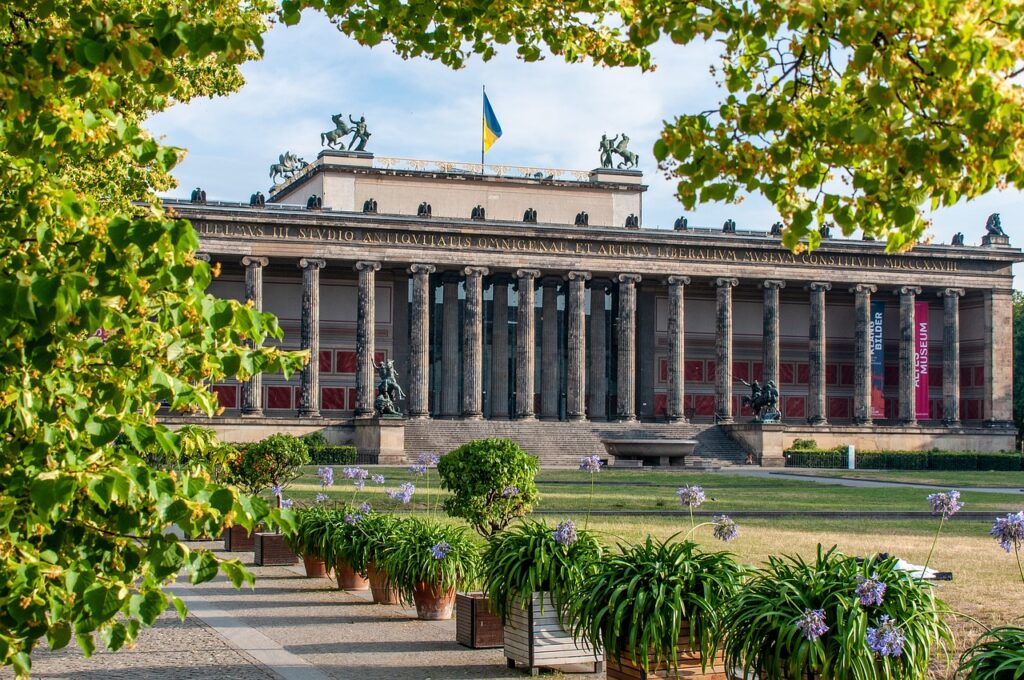
The Altes Museum, or Old Museum, is a famous museum located on Museum Island in the heart of Berlin, Germany. It features an impressive collection of ancient artifacts from Greece, Rome, and Etruria. Visitors can find beautiful Greek vases, statues, and Roman busts, as well as images of well-known emperors. It’s a great place to explore the art and culture of the past!
The entrance of the building features impressive Ionic columns that lead up to a wide staircase. Inside, you’ll find a grand dome that reminds visitors of the famous Pantheon in Rome. If you are interested in ancient history, art, or architecture, you should definitely visit the Altes Museum. It’s an important part of Berlin’s cultural history.
What is the history of Bode Museum?
Bode Museum, designed by architect Ernst von Ihne, opened its doors in 1904. Its beautiful Baroque Revival style and distinctive dome make it stand out among other museums, attracting many visitors, especially those interested in architecture. Originally called the Kaiser-Friedrich-Museum, it was renamed the Bode Museum in 1956 to honor Wilhelm von Bode, its first director, who had a significant impact on the museum’s collections and overall vision. After World War II, the museum suffered some damage but was restored and reopened in 2006 with improved facilities and exhibits, inviting even more people to explore its treasures.
What is the Bode Museum famous for?

Bode Museum is famous for its unique architectural design and diverse collection of art, making it a popular destination for visitors. It is a crucial museum located on Museum Island in Berlin, which is recognized as a UNESCO World Heritage Site. The Bode Museum is home to a wide range of artistic treasures, including sculptures, Byzantine art, and an impressive collection of coins. You can find sculptures that span from the early Middle Ages all the way to the late 1700s, with a strong emphasis on works from Germany, Italy, and France.
Bode Museum also showcases Byzantine art, which features pieces from the Roman and early Christian periods. Additionally, the Numismatic Collection—also known as the Coin Cabinet—boasts one of the largest coin collections in the world, making it a fascinating destination for anyone interested in history and art.
What is the history of Alte Nationalgalerie?
The Alte Nationalgalerie was designed by Friedrich August Stüler, who studied under the famous architect Karl Friedrich Schinkel. The gallery opened its doors in March 1876 to honor Kaiser Wilhelm I. It became the third museum located on Museum Island in the Spree River, a well-known area in Berlin. The building was hit multiple times during the air attacks of World War II and it was heavily damaged, especially after 1944.
After the war ended, the building was quickly repaired, though the restoration was temporary. Some areas of the building welcomed visitors again in 1949, and the second floor was opened to the public the following year. In 1992, the architectural firm HG Merz Berlin was given the task of renovating the Alte Nationalgalerie. The museum closed its doors for these renovations in March 1998. After several years of work, it finally reopened in December 2001, just in time to celebrate its 125th anniversary.
What is the Alte Nationalgalerie Museum famous for?
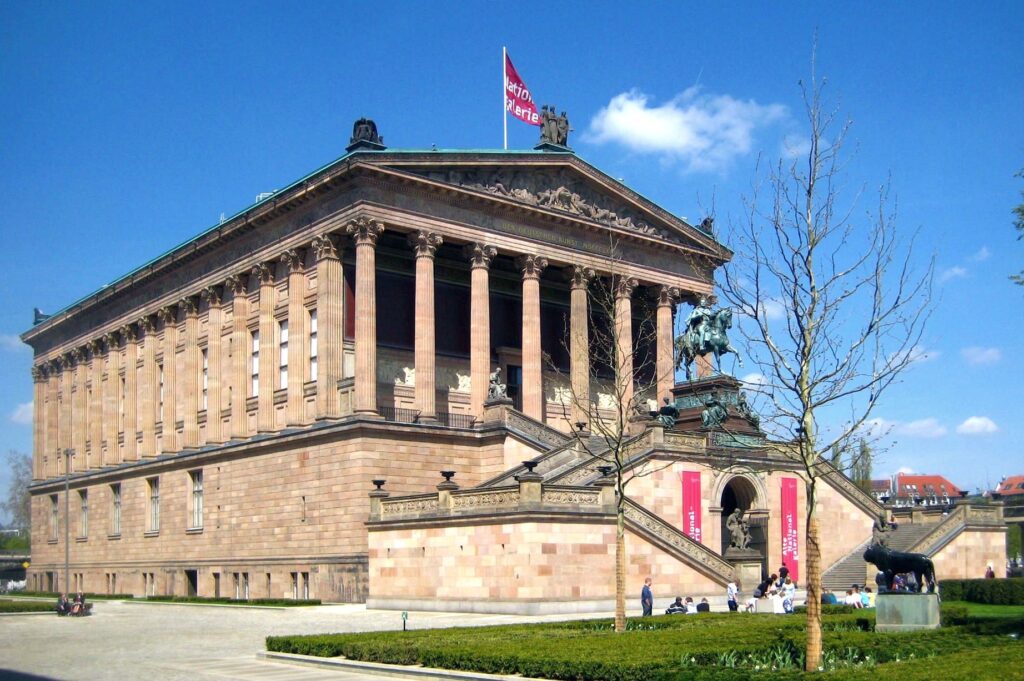
The Alte Nationalgalerie is famous for its fantastic collection of European art from the 19th century, mainly focusing on German Romanticism, Realism, and Impressionism. Among the featured artists is Caspar David Friedrich, who is famous for his beautiful landscapes that capture the essence of nature and deep emotions. The gallery also showcases works by Adolph von Menzel and other Realist artists, who portrayed the changes happening in society and industry during that time. It’s a great place to explore how art reflects the world of that era!
The Alte Nationalgalerie is home to important sculptures, including some by Johann Gottfried Schadow, a famous German sculptor from the 1800s. One of his well-known works features Princesses Luise and Friederike of Prussia, and you can see it on display there. The Alte Nationalgalerie is an important cultural treasure. It has a wide range of artwork, showcasing styles from the Romantic period to Impressionism, celebrating the creativity of 19th-century artists. The building itself is also beautifully designed, adding to its significance in history.
What is the Museum Island famous for?
Museum Island, right in the center of Berlin, is well-known for its incredible collection of five museums, each displaying art and historical items from different times and cultures. Among these are the Pergamon Museum, famous for its impressive large-scale architecture displays, and the Altes Museum, which features ancient treasures. This Museum Island is recognized as a UNESCO Heritage site, making it a major cultural and historical spot in Germany.
Why do we need to preserve Museum Island significantly for us and future generations?
Preserving Museum Island is really important because it’s recognized as a UNESCO Heritage site, which means it’s a place of special cultural and historical value. This island holds a lot of amazing art and history that we want to share with future generations. By protecting its collections and buildings, we make sure that people can continue to learn from and enjoy these treasures. Museum Island reflects human creativity and our shared past, helping to educate and inspire us all. Looking after this site allows us to appreciate the accomplishments of those who came before us and keeps our cultural story alive.
Why should you visit Museum Island as a visitor?
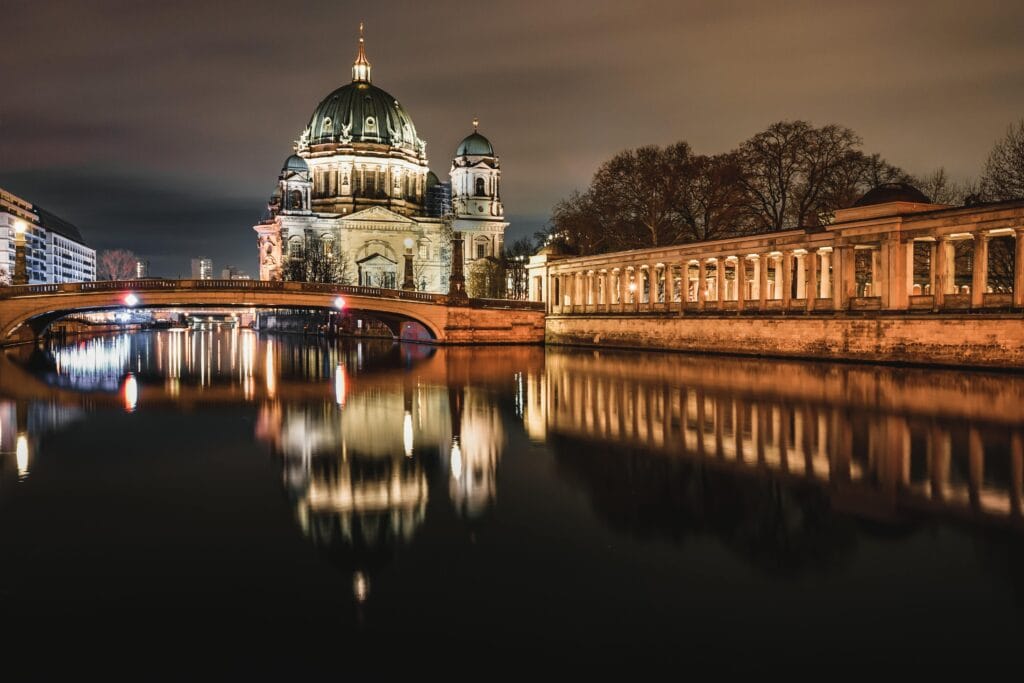
Museum Island is a place that everyone should see when they travel. It has a unique group of famous museums, each one filled with amazing art and interesting things from different times and cultures. Visitors can enjoy a wonderful experience learning about history while admiring the beautiful buildings and the captivating stories behind the treasures inside.
The beautiful scenery by the Spree River creates a lovely setting for a relaxing walk, making your visit not only informative but also visually captivating. Whether you’re a fan of art, history, or just looking to enjoy a rich cultural experience, Museum Island has something for everyone to enjoy.
How would you like to experience the rich history of Berlin while surrounded by stunning architecture?
Don’t miss out on the chance to explore Museum Island! Plan your trip today to immerse yourself in the art, history, and breathtaking scenery this UNESCO World Heritage site has to offer. Whether you’re traveling solo, with friends, or family, there’s so much to discover.
When you’re planning your adventure, enhance your travel experience by using trusted websites like GetYourGuide,Trip.com, Trainline, Agoda, Expedia and Hotels.com! These platforms offer a variety of enjoyable tours, activities, and accommodation options to suit every traveler’s needs.
- GetYourGuide offers a wide variety of unforgettable travel experiences. You can choose from tickets to Popular Attractions, Transportation Options, City Passes, Guided Tours, Hop-on Hop-off Bus Services, Water Activities, Day trips, and Trips that last several days in many locations around the world.
- Trip.com makes it easy to combine Flights and Hotels, Trains, Car Rentals, Airport Transfers and Attractions & Tours to create the perfect travel package tailored just for you.
- Trainline makes traveling a breeze! With only a few steps, you can effortlessly book train tickets across Europe, compare prices, and find the best routes. Whether you’re planning a weekend getaway or a longer adventure, Trainline ensures a smooth journey from start to finish.
- Agoda offers a wide range of accommodations and travel options to suit your needs. With user-friendly search features, you can easily find the perfect Hotel, Apartment, or Villa, Flights, Activities and Airport Transfer at competitive prices.
- Expedia to find the perfect travel deals and begin planning your next adventure with ease. Your unforgettable trip is just a click away!
- Hotels.com today to explore incredible deals and find the perfect housing for your dream trip! Your adventure starts here!
Start your journey with our reliable travel partners and unlock the best of Museum Island and beyond!
Disclaimer
In this post, affiliate links are included and those links are associated with well-known travel companies such as GetYourGuide, Trip.com, Trainline, Agoda, Expedia and Hotels.com. If you choose to purchase or book a service using those links, we may earn a commission at no additional cost to you. We focus on recommending products and services that are helpful to you and we appreciate your support!
Conclusion
We hope you find this information helpful for your next trip. If you want to learn more, check out our other travel blog posts. We cover many topics, including amazing places to visit and helpful travel tips. Whether you’re looking for hidden gems, new cultures, or helpful advice, there’s something for everyone.
Additionally, if you enjoyed the information we shared, don’t forget to explore our other travel product reviews to make your journey even better! Please take a moment to look through our previous posts and let your sense of adventure guide you on your next journey! We wish you happy travels and look forward to sharing more with you in our next blog post!




